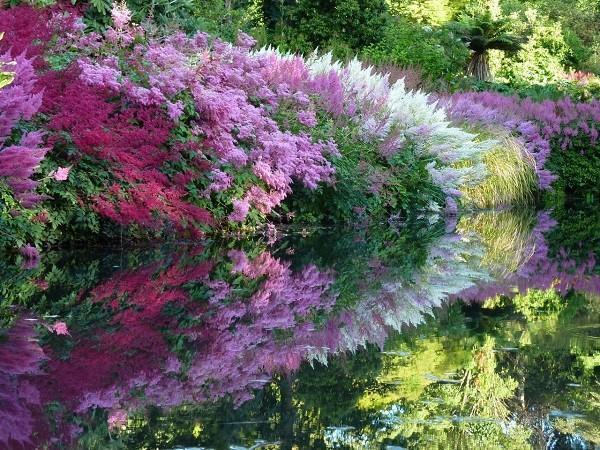What you need to know when growing astilba in the garden
 One of the most beautiful perennials to plant in your garden is astilba (pictured)... She came to us not so long ago and began to be massively used to decorate the site only at the end of the twentieth century. However, those who ventured into a new flower for themselves soon realized all the benefits of astilba, and the culture quickly became very popular.
One of the most beautiful perennials to plant in your garden is astilba (pictured)... She came to us not so long ago and began to be massively used to decorate the site only at the end of the twentieth century. However, those who ventured into a new flower for themselves soon realized all the benefits of astilba, and the culture quickly became very popular.
With what astilba different from other perennials? It's pretty simple - it can be grown in shady areas. Where most garden flowers stretch out in search of the sun and bloom poorly, astilba feels just gorgeous.
"Astilba" is translated from Latin as "strong shine", which is quite consistent with the appearance of the flower: its leaves shine mysteriously in partial shade, highlighting the dark areas of the garden.
Despite the fact that the perennial is not very fond of the sun, its color scale has not suffered from this at all - all the colors of the rainbow are present here. Each grower can find a variety according to his preferences, because the color of astilba inflorescences is very diverse, ranging from classic pale white tones to rich dark colors. Plant height can also vary. For example, the compact Japanese astilbe (35 cm) and its opposite is the tall Lemoine astilbe (120 cm). But the leaves of all species of perennial are equally beautiful and delicate.
In early spring, young shoots of Astilba are colored reddish, which then turns green.
Choosing a landing site
Astilba simply needs semi-shady areas (it is quite clear that not a single flower will survive in complete darkness). Usually, in such places, the soil is wet for a long time, because it dries out slowly, and this is an additional pole in favor of astilba. If the site is fully illuminated by the sun and there is no way to find shadows on it, the plant will have to be watered often. Astilba will not survive without constant watering in the sun.
Do not plant astilba under tall trees. They choose nutrients from the soil within the radius of the crown, as well as moisture, which is so necessary for astilbe.
A perennial bush that loves the shade looks beautiful both with a single planting and as a continuous canvas, especially if you use varieties of different colors and alternate them in stripes.
What plants is astilba combined with?
Unpretentious astilbe is surprisingly combined with all shade-tolerant and shade-loving plants, such as:
- different kinds of bells;
- hosts;
- conifers of any color.
When planting in groups, it is worth considering the height of the plants so that the undersized astilbe is not lost under the tall and lush neighbors, or vice versa.